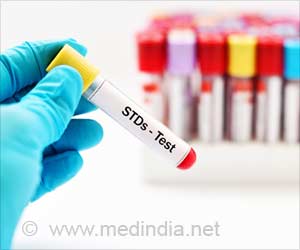Activists, medical experts and counselors have urged the Ontario Government to launch a programme to ensure provision of drug treatment to all victims of sexual assault, who might have been exposed to the HIV/AIDS virus. The cost associated with this drug treatment ($1,200) has resulted in a limited availability of this therapy (combination therapy using Combivir and Kaletra).
Very little effort is being done to promote the availability of this potential life saving therapy amongst the general public, according to Llewellyn Goddard, an active member of the Toronto's People with AIDS Foundation. "There are gaps in terms of health campaigns out there and PEP (post-exposure prophylaxis) is one of them", said Watchorn, one of the health officials.This form of treatment has been offered to health care workers since 1990. The pressure exerted by sexual assault centers and members of the medical community ensured availability of the treatment at more than 24 regional sex assault centers. In order for the treatment to be effective, it has to be offered within 72 hours of the incident.
This however would not have been possible if not for the joint study conducted by the Ontario Women's Health Council and the Centre for Research in Women's Health. It is further hoped that this facility can be made available to all sexual assault victims if it were to be funded universally.
The treatment, commonly known as morning-after pill for exposure to HIV, should be used in cases of known HIV exposure for a period of 28 days. If this information is not known, offering the treatment is largely based on the discretion of the attending physician. While doing so, it is equally important for the doctor to assess the risk associated with an encounter and to discuss the advantages and disadvantages with the patient, thereby enabling them take an informed decision.
If instituted within the stipulated time, has been found to reduce the risk of transmission by as much as 80%. Nausea, fatigue and diarrhea represent some of the most commonly seen side effects. Liver damage and severe skin reactions can be manifested in severe cases. It is possible to reverse the side effects or attenuate the same by adjusting the dose of the medication or the drug combinations.
A majority of victims who take the treatment however, discontinue the same, prompting concerns regarding the development of immunity to the currently used anti-retroviral drugs.
The probability of transmission of HIV during one episode of sexual contact episode is about 0.1 to 1%. The risk is even greater if either partner has a diagnosis of HIV infection. If such an individual has anal sex, the risk of transmission to the partner is as high as 3%. This is much lesser than the probability of HIV transmission due to sharing needles or syringes (<1%).
A legal case filed by a gay couple in Britain recently has sparked an international debate on whether or not governments can be held responsible for not fully adopting this treatment regimen to fight against the spread of this deadly disease. The lack of transparency regarding the use of the medication related to a condom accident is believed to have ignited the fire.
While the above issue is controversial, it is reasonable to show interest in the prophylactic measures to be instituted soon after an episode of sexual assault, based on a personal motive to prevent contraction of HIV or other such diseases.







